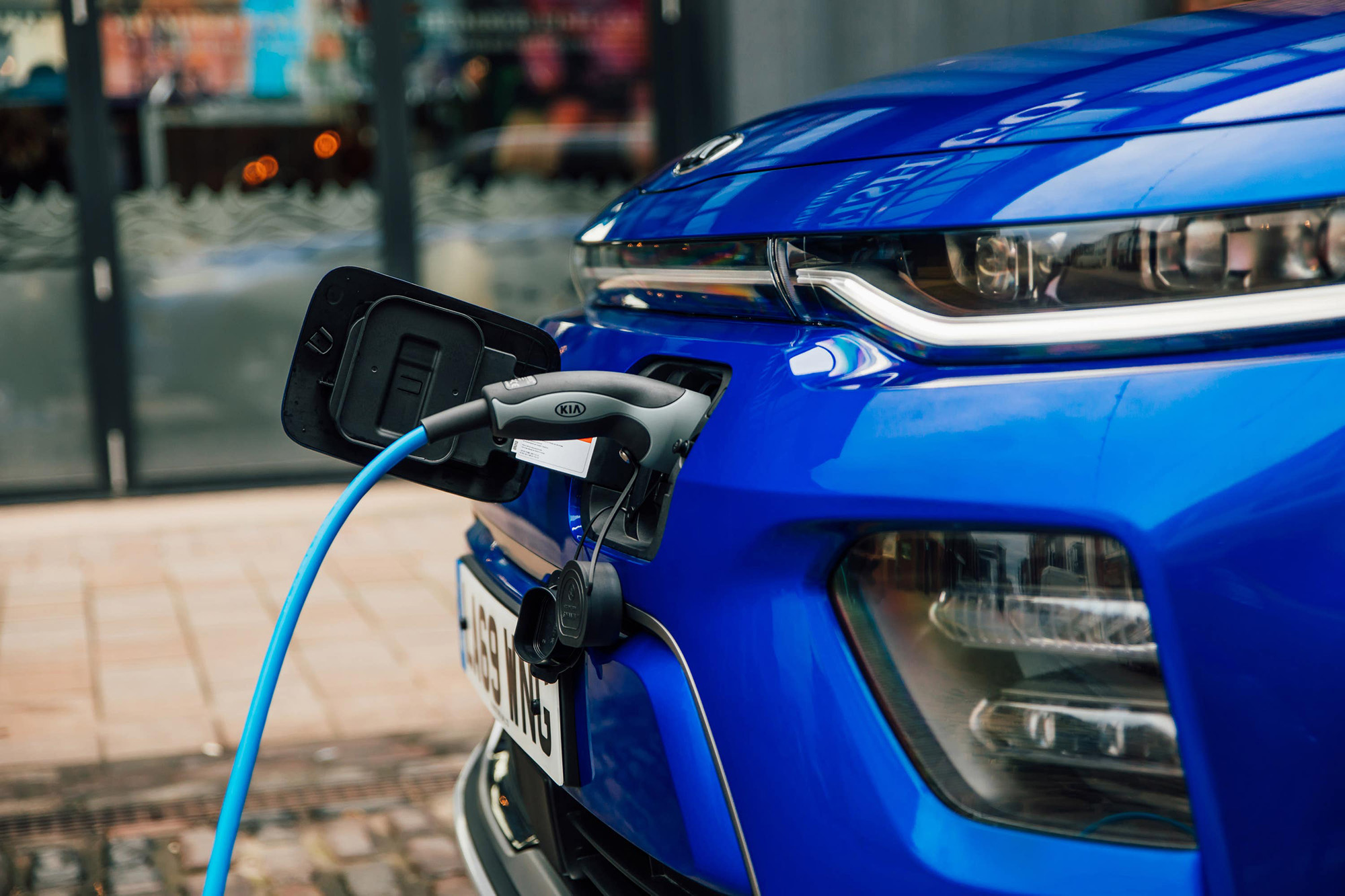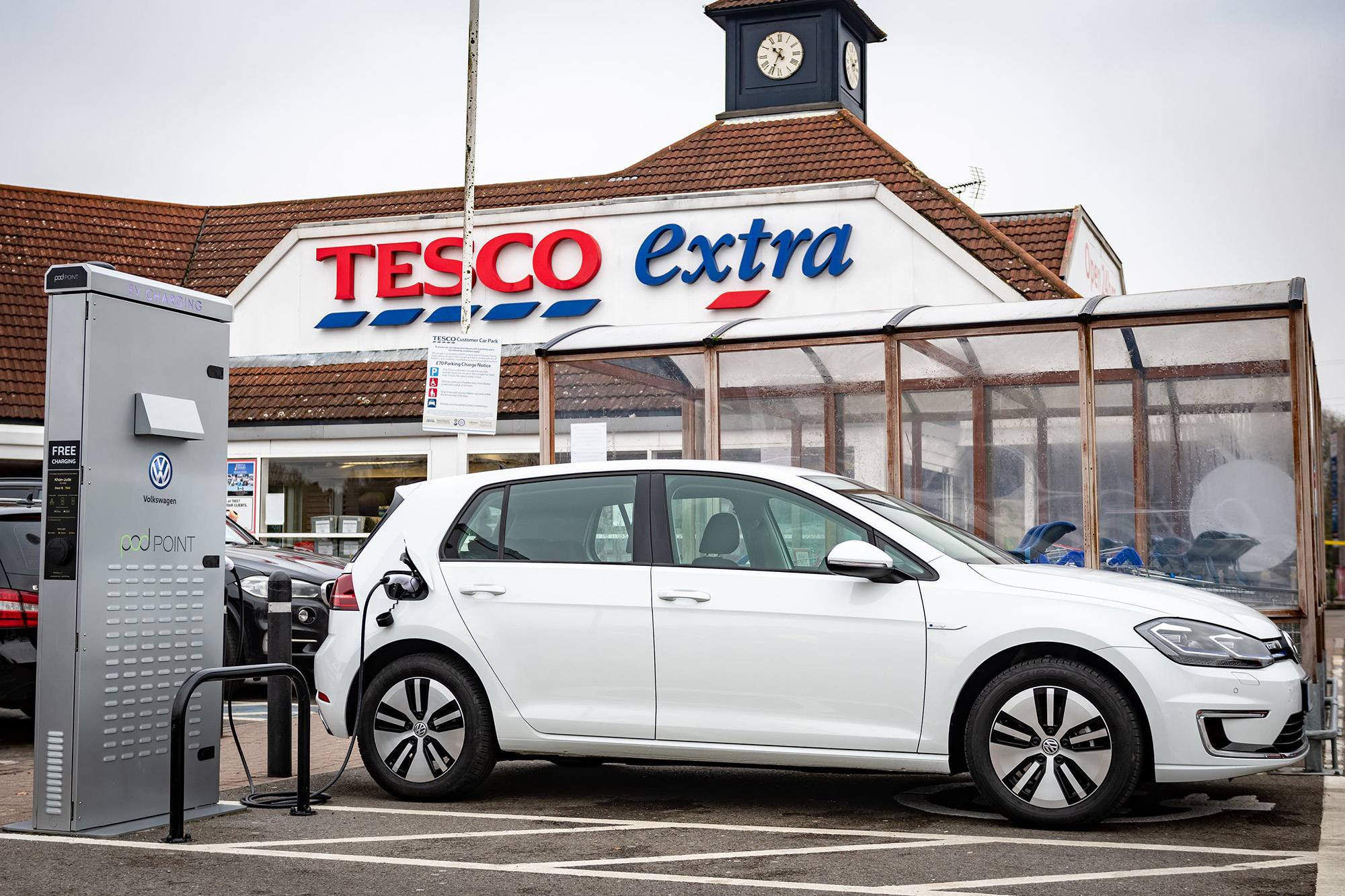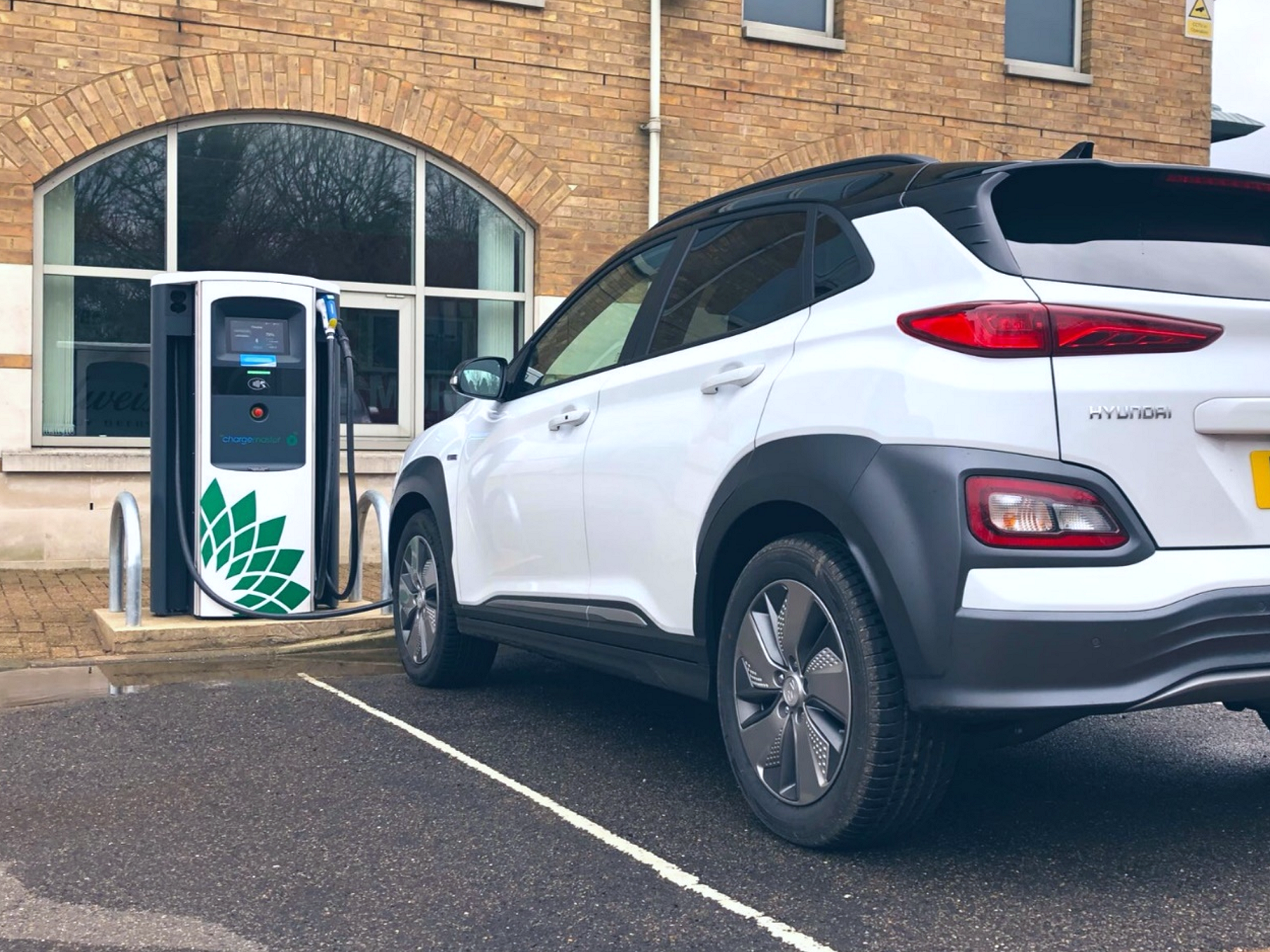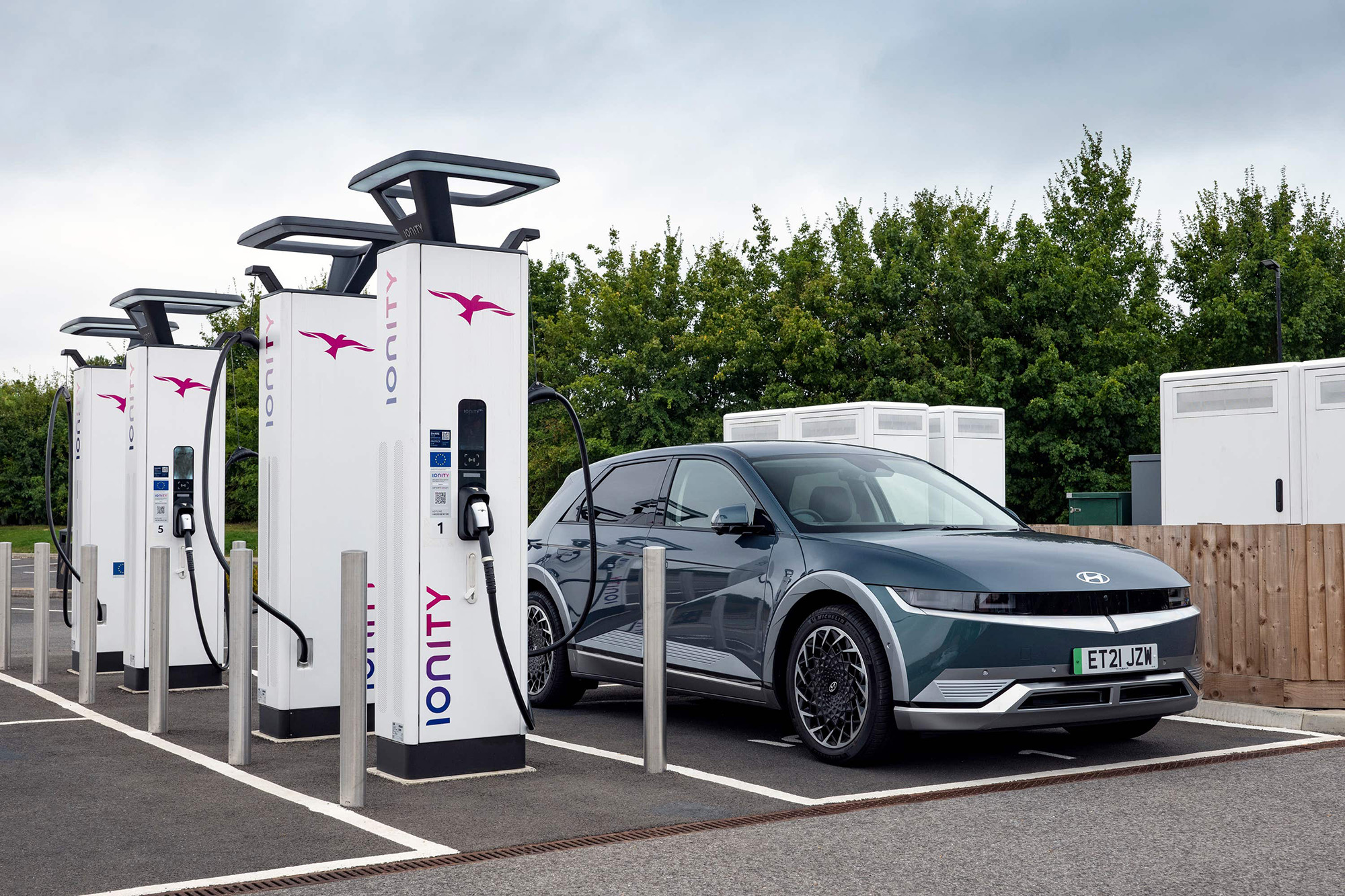Hyundai and Toyota came under fire recently from the Advertising Standards Authority over ads about their quick charging times.
The ASA found that the adverts relating to Hyundai’s Ioniq 5 and Toyota’s bZ4X were ‘misleading’ because of many variables and limitations at play, especially when it came to the availability of the quickest EV chargers.
But what are the different types of public EV chargers in the UK, how long can you expect a typical EV to charge with each one and what is the availability of each type of charger like? All is explained here…
AC slow charging – Up to 6kW

Slow chargers are typically found on streets. (Image: Kia)
There are two main types of EV charger – alternative current (AC) and direct current (DC).
The first is used for slower charging, with the latter adopted for quicker speeds.
If you’re in no rush, what’s classed as a ‘slow charger’ is the best bet.
These are rated at speeds of up to 6kW and are ideal if a car is parked for an extended period. They are typically found in on-street chargers, including those in lamp posts.
Let’s use Hyundai’s Ioniq 5 as an example. When equipped with the smaller 58kWh battery (an average size for an EV’s battery), it would take 16 hours to complete a charge.
‘Slow’ units are the second most popular type of charger in the UK.
According to data from Zap-Map, one of the leading EV charging navigation firms, as of the end of May 2023, there were 10,699 slow chargers across Britain.
AC fast chargers – 7kW to 22kW

Fast chargers are usually found where cars will typically be parked for a few hours. (Image: Volkswagen)
The most popular type of charger in the UK is what’s known as a ‘fast charger’.
Rated between 7kW and 22kW, the smaller number is the most common type.
These are often found in places where cars are usually stopped for several hours, such as in shopping centre and workplace car parks.
The 7kW output is the typical output of a specific home EV charger, and with the Ioniq 5, it would take nine hours for a full charge.
If you hooked up to a quicker 22kW charger, the time is reduced to six hours.
According to Zap-Map data, there are currently 24,443 fast charging points in the UK.
DC rapid charger – 25kW to 99kW

Rapid chargers can charge at up to 99kW. (Image: BP Pulse)
If you’re looking to speed things up a notch, it’s worth trying to find what’s known as a ‘rapid charger’.
These are rated between 25kW and 99kW, although 50kW is the most common output.
Often found in the car parks of supermarkets and fast food outlets, it would take around 45 minutes to charge the Ioniq 5’s 58kWh battery with one of these units, according to Hyundai’s data.
As of May 2023, there were 5,182 rapid electric car charging points across the UK.
DC ultra-rapid charger – 100kW+

The quickest ultra-rapid charging units are only available at a small number of locations. (Image: Hyundai)
If you’re looking to top up an EV’s battery as quickly as possible, ultra-rapid chargers are the ones to find. These are rated from 100kW upwards.
They are typically found at motorway service stations, although specific EV hubs are now being set up with banks of these quicker units.
Most Porsche dealers also have 350kW units that are available for use by the public.
It’s worth noting that every EV will have a maximum charging speed, with the most for some older electric cars – or those with a smaller battery – being 50kW.
That means there’s not a lot of point in using an ultra-rapid charger over a standard ‘rapid’ charger, as it won’t charge it any more quickly.
But the Ioniq 5 is one of those that can charge at up to 350kW, which means that in ideal conditions it could take just 18 minutes to charge the battery to 80 per cent capacity.
However, the trouble there – as the ASA pointed out – is that there is limited availability of 350kW units.
According to Zap-Map data, there are 3,302 ultra-rapid chargers across the UK but only around 70 locations that have 350kW chargers.
The whole of Scotland, for example, has just six places that can deliver such charging speeds, while there are only three in Wales and all of them are in the south.
Main image via Hyundai
This feature appears in the current edition of Car Dealer – issue 185 – along with news, views, reviews, interviews and much more! Read and download it for FREE here!


































